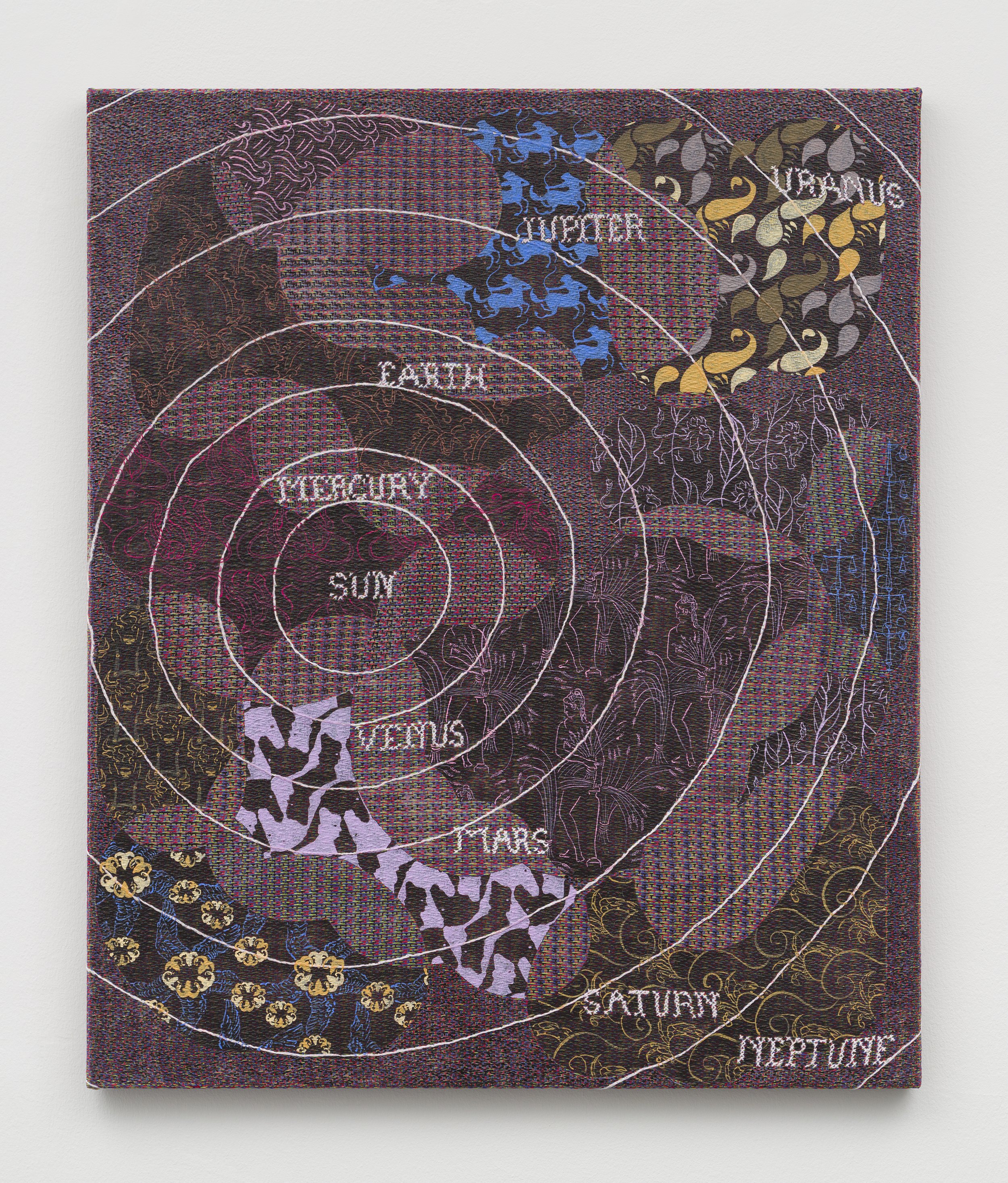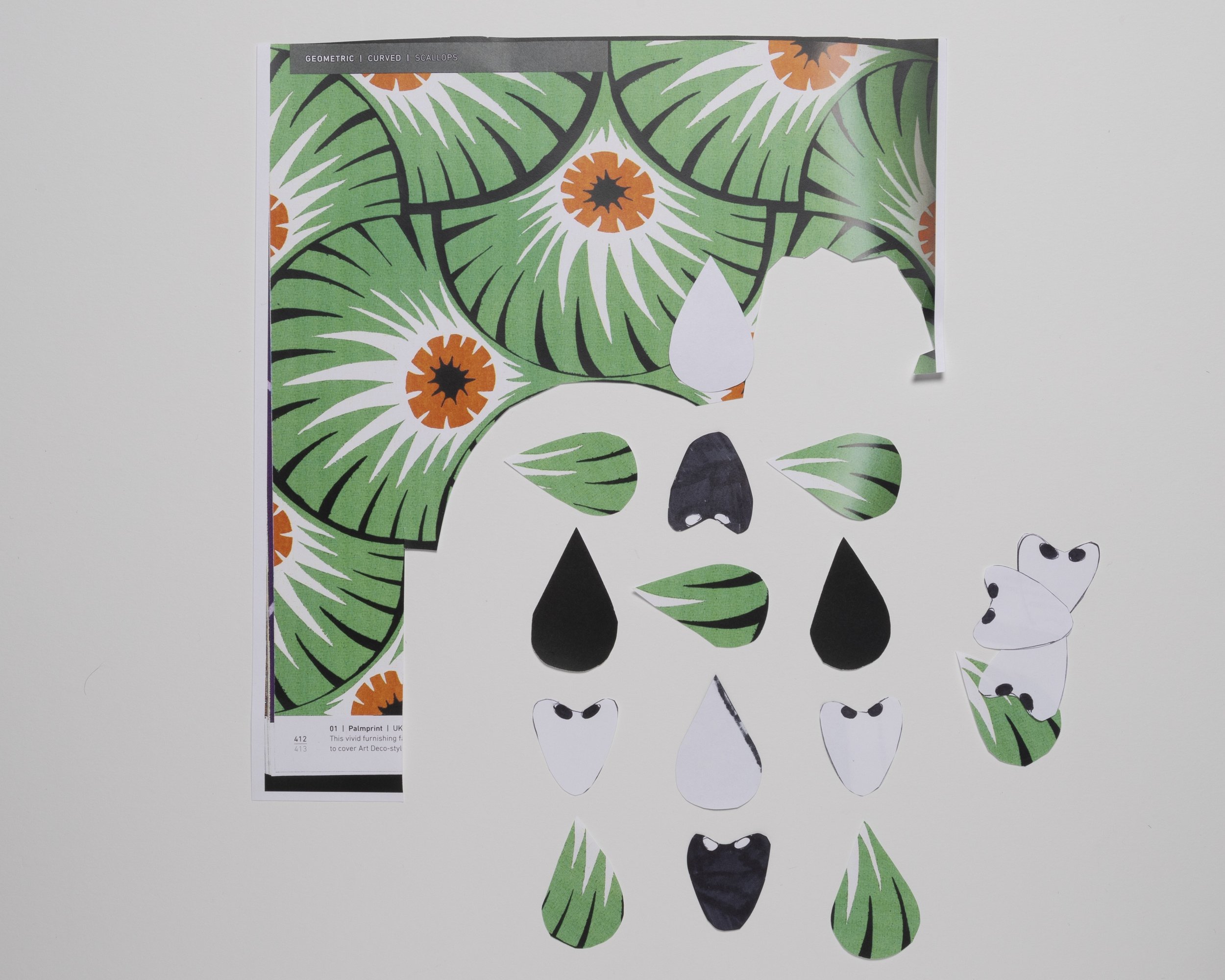Systems and Mythologies
For artist duo Mark Barrow and Sarah Parke, weaving is a way of thinking. The subject matter of their collaborative art practice combining handloomed textiles and painting covers topics from world creation myths to computer science to the cosmos, but their work always centers on the craft of weaving: its history, logic, mathematics, and systems, and its intuitive, visual, and tactile qualities. The University Art Museum proudly presents Barrow Parke: Systems and Mythologies, Barrow Parke’s first solo museum exhibition, featuring newly commissioned work, including site-specific wallpaper and vinyl window installations, alongside earlier series showing the arc of their fifteen-year collaboration.
Barrow Parke’s most recent work shows how weaving provides a framework for thinking about systems, such as those in the sciences or anthropology. In Shapes in Time (2022), for example, woven and embroidered trees are juxtaposed with painted numbers appearing like computer code. The work conjures associations between natural root systems, “root directories” in computer science, and the numbered shafts and pedals of the eight-harness floor loom used to handweave the fabric itself.
Through woven and painted patterns, Barrow Parke frequently explore the patterns of thinking that form mythological and scientific systems for understanding the cosmos, as seen in the exhibition’s recurring Zodiac figures and Copernican orbits. The newly commissioned work The Universe (2023), for example, features fish from a Japanese Ainu creation myth swimming in a sea of patterns that include Zodiac motifs.
Barrow Parke’s earlier CMYK (2014-2015) and RGB series (2014) explore visual systems. In the latter, select red, green, and blue threads within a woven substrate are individually masked out in black paint, resulting in colors that are optically mixed as with a television or computer monitor. In conversation with the RGB works is a newly commissioned piece covering an entire arched bay of four floor-to-ceiling double windows: a luminous translation of graph paper weaving drafts into a grid of translucent red, green, blue, and black vinyl squares that read like stained glass. Earlier iterations of the draft pattern window vinyl projects were realized in New York, Brussels, Milan, and in a permanent installation at Cappella Cavassa, Saluzzo, Italy.
The digital inflection of the vinyl window pixels, as well as the computer-generated patterned wallpaper, push up against the modernist architecture of the museum, designed in 1967 by Edward Durell Stone. In contrast to the expectations of the “white cube” of modernist exhibition spaces, Barrow Parke’s patterned wallpaper domesticates the space. A challenge to modernist aesthetics was also the impetus for Barrow Parke’s earliest collaborations (2008–11), which invert the hierarchy that has privileged painting over weaving by showing how the grid, so crucial to modern abstract painting, has always been inherent in the structure of the woven canvas.
The exhibition also includes works from the University at Albany Fine Art Collections and on loan by modernist and late modernist artists: Anni Albers, Josef Albers, Ellsworth Kelly, and Agnes Martin. All were selected by Barrow Parke to underscore their dialogue with modernism, which in turn informs all the ways they use weaving to think about the world in Systems and Mythologies.
































































